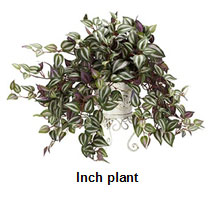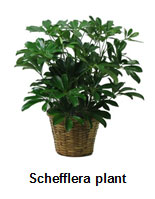

The number of stomata on leaf surfaces varies widely among different species of plants. Generally, the lower epidermis of the leaf tends to have a higher total number of stomata than the upper surface. Scientists have counted the number of stomata for many species of plants. Their data indicates that the number of stomata may vary from zero on the upper epidermis of an apple leaf, to as high as 58,140 per square centimeter on the lower epidermis of black oak leaves.
Stomata can be viewed with a microscope by making an impression of the leaf and transferring the impression to a microscopic slide.
clear nail polish
microscope
microscope slide
clear (transparent) tape
leaf from an Inch plant (Tradescantia zebrine)
leaf from a Schefflera plant (Schefflera arboricola)
 |
 |
Answer the following questions based on your observations from the lab.
Interactive popup. Assistance may be required.
Six stomata can be seen in the field of view.
Interactive popup. Assistance may be required.
Approximately 45 stomata can be seen in the field of view.
Interactive popup. Assistance may be required.
The total magnification would be 100X.
Interactive popup. Assistance may be required.
The Inch plant is the drought-resistant plant because it does not have very many stomata present. Having only a few stomata prevents the plant from losing water through transpiration.
Sources for images used in this section, as they appear, top to bottom: